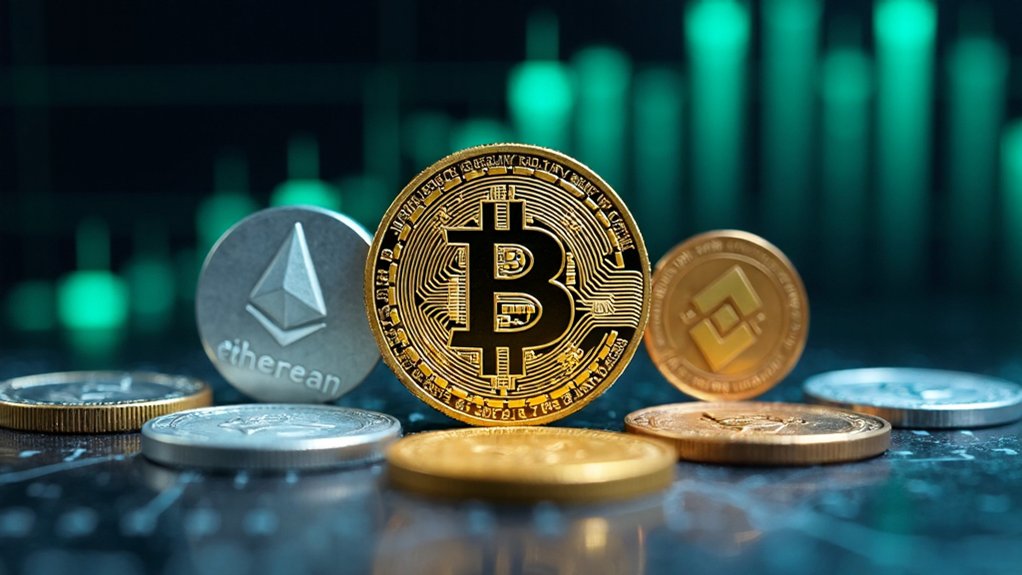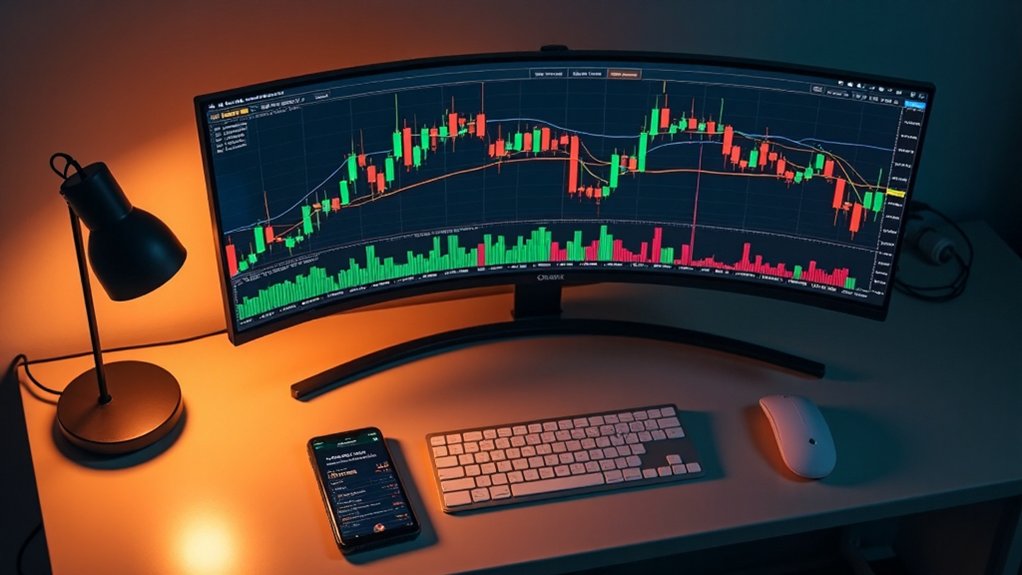Blockchain is a distributed digital ledger technology that chronologically records transactions across multiple computers, ensuring transparency and security through cryptographic links between data blocks. This architecture—resistant to tampering and fraud—operates without central authorities via consensus mechanisms like Proof of Work or Stake. Originally Bitcoin’s foundation, blockchain now powers smart contracts, decentralized finance, and enterprise applications across sectors. The technology’s combination of immutability and decentralization continues revolutionizing how value transfers in our digital economy.

A blockchain, that once-esoteric digital infrastructure now underpinning everything from speculative cryptocurrencies to enterprise-grade supply chains, represents perhaps the most consequential technological paradigm shift since the internet itself.
At its core, it functions as a distributed digital ledger—a chronological record of transactions replicated across numerous computers rather than residing in a central repository.
This architectural choice renders the system remarkably resistant to both failure and fraud; when information exists simultaneously in thousands of locations, tampering becomes a mathematical near-impossibility.
The mechanism operates through a series of cryptographically secured “blocks” containing batches of validated transactions.
Each block links to its predecessor through complex mathematical functions (hash values, for the technically inclined), creating an unbroken chain where altering any single record would require recomputing every subsequent block—a computational feat beyond practical reach.
Network participants, or “nodes,” maintain identical ledger copies and employ consensus protocols—most especially Proof of Work or the more energy-efficient Proof of Stake—to agree upon the addition of new blocks without requiring a central authority’s blessing.
This architecture has spawned applications far transcending Bitcoin’s original ambitions.
Smart contracts—self-executing agreements with terms directly encoded—have transformed blockchain from mere transaction ledger to programmable economic infrastructure.
Industries from finance to logistics now leverage these capabilities for everything from automated loan processing to granular supply chain tracking, despite persistent challenges around scalability and regulatory uncertainty.
The technology’s most profound innovation may be its immutable transparency.
Every transaction remains permanently visible to all participants, creating an unprecedented audit trail while simultaneously protecting against unauthorized modifications.
This characteristic eliminates the traditional need for trusted intermediaries—those banks, brokers and clearinghouses extracting fees for services blockchain renders technologically superfluous.
The technology provides permanent timestamping of each transaction, ensuring that all records contain exact chronological information that further enhances verifiability and prevents retrospective alterations.
Unlike traditional currencies, blockchain-based cryptocurrencies like Bitcoin are designed with a fixed supply cap, creating scarcity that influences their market valuation.
Since Bitcoin’s introduction in 2009, blockchain technology has expanded dramatically across various sectors including decentralized finance, NFTs, and numerous enterprise applications.
Despite implementation hurdles and energy consumption concerns, this fundamental reconfiguration of trust architecture continues driving blockchain’s expansion across increasingly diverse sectors of the global economy.
Frequently Asked Questions
How Are Blockchain Transactions Verified Without a Central Authority?
Blockchain transactions achieve verification through consensus mechanisms that distribute responsibility across network participants.
In Proof of Work systems, miners compete to solve computational puzzles, while Proof of Stake employs validators who pledge cryptocurrency as collateral.
These decentralized participants verify transaction signatures, confirm available balances, and enforce protocol rules—receiving rewards for their efforts.
This elegant arrangement (remarkable in its self-regulating efficiency) replaces central authorities with economic incentives that align participant interests with network integrity.
What Environmental Impact Does Blockchain Mining Have?
Blockchain mining—particularly for proof-of-work cryptocurrencies like Bitcoin—exacts a staggering environmental toll.
The process devours electricity (predominantly from fossil fuels) at rates comparable to small nations, while generating millions of tons of CO2 emissions annually.
Mining operations contribute to air pollution, exposing nearby communities to harmful particulates, while their cooling systems consume significant water resources.
The hardware’s short lifespan compounds the problem by creating electronic waste—a perfect storm of environmental degradation that regulatory bodies are only beginning to address.
Can Blockchain Technology Be Hacked?
Yes, blockchain technology can be hacked, despite its reputation for security.
While the distributed ledger itself is highly resistant to tampering, adjacent infrastructure remains vulnerable.
Attackers exploit smart contract flaws, compromise cross-chain bridges, execute 51% attacks on smaller networks, and target users through phishing.
The Ronin Network hack ($625 million stolen) and Ethereum Classic’s multiple 51% attacks in 2020 ($9 million lost) serve as sobering reminders that blockchain security is only as strong as its weakest link.
How Do Smart Contracts Function on Blockchain Platforms?
Smart contracts operate as self-executing code on blockchain platforms, autonomously triggering predefined actions when conditions are met—without requiring trusted intermediaries (a rather revolutionary concept in traditionally middleman-heavy industries).
These digital agreements leverage blockchain’s immutability and distributed verification to guarantee that once deployed, their execution remains tamper-proof and transparent.
The network’s nodes collectively validate condition fulfillment before executing terms, creating a trustless system where parties need not rely on faith, but mathematics and cryptography.
What Regulatory Challenges Does Blockchain Face Globally?
Blockchain’s regulatory landscape resembles a global patchwork quilt, stitched together with inconsistent threads of compliance requirements.
Regulators worldwide grapple with classifying digital assets (are they securities? commodities? something entirely novel?), while businesses navigate the murky waters of cross-border operations.
AML compliance presents particular challenges, as does the tension between privacy and transparency.
Meanwhile, consumer protection frameworks struggle to keep pace with technological innovation—a regulatory game of whack-a-mole that shows no signs of simplification.









